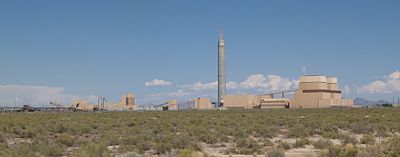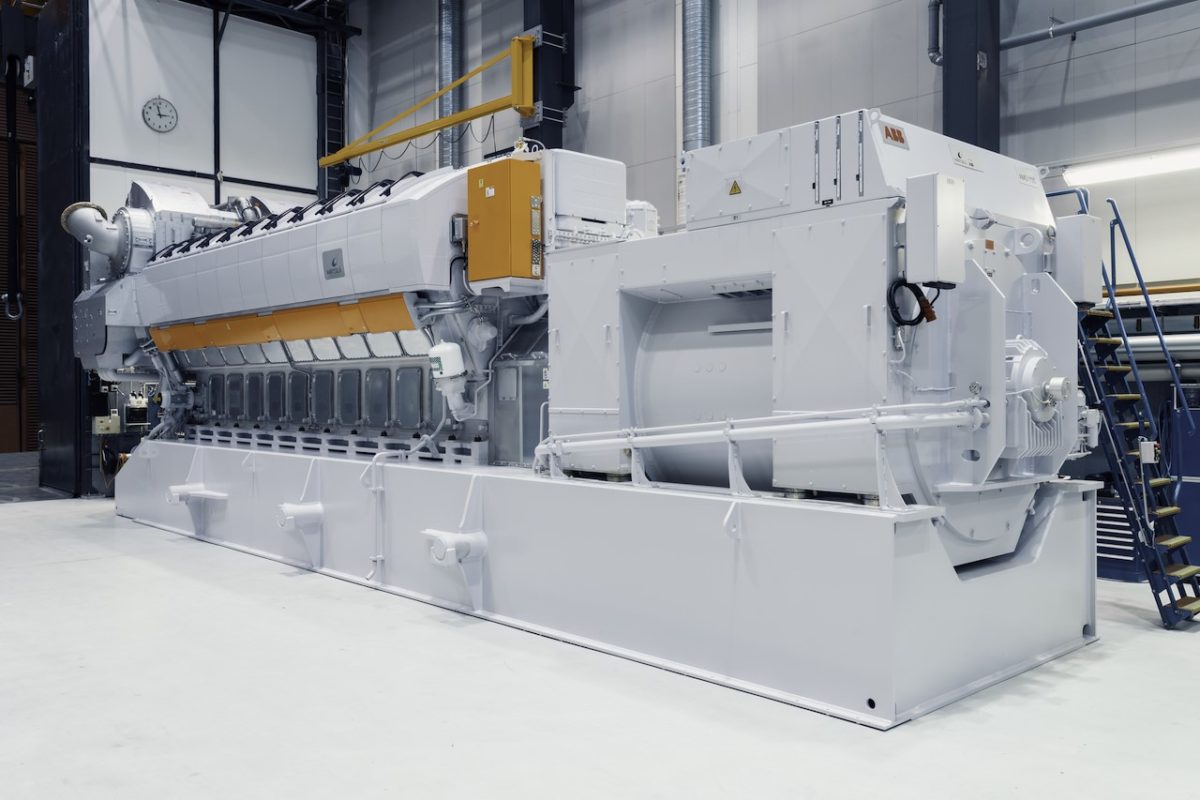Global power plant developer Wärtsilä has begun testing in Finland to learn how its reciprocating internal combustion engines may be fueled with pure hydrogen. It also announced plans to disclose by 2025 an engine and power plant “concept” capable of running on 100% hydrogen. The firm said it has already proven its existing engines can be operated with up to 25% hydrogen.

Image: Wikipedia
Wärtsilä joins other engine and turbine manufacturers in working to test and prove hydrogen-based power generating technology.
One utility that is already planning long-term seasonal storage of renewable energy as hydrogen is the Los Angeles Department of Water and Power. LADWP is leading the conversion of the Intermountain Power Project in Delta, Utah, to use one of the world’s first gas turbines designed and built to operate on 100% green hydrogen.
Dubbed “IPP Renewed,” the Intermountain project includes retiring existing coal-fired units at the power plant site and installing new natural gas-fired electricity generating units capable of utilizing hydrogen for 840 MW net generation output. Additional investment will modernize the power plant’s transmission system to southern California, and develop hydrogen production and long-term storage capabilities. The new natural gas generating units will be provided by Mitsubishi Power and designed to use 30% hydrogen fuel at start-up, transitioning to 100% hydrogen fuel by 2045 as technology improves.
Salt dome storage of hydrogen is also being evaluated at other U.S. locations, by a partnership between Mitsubishi Power and Texas Brine.
Wärtsilä said it will test its existing internal combustion engines to find the “optimum parameters” for running on hydrogen. The firm projects that 933 GW of carbon-neutral “thermal balancing capacity” will be needed in the G20 group of nations to achieve 100% renewable energy.
Flashback
One challenge in introducing hydrogen to conventional gas-fired power plants is the issue of flashback, a phenomenon where the flames inside the combustor travel up the incoming fuel and actually exit the combustion chamber.

Mixing hydrogen with air must be done in as confined a space as possible. The problem is that flashback becomes more likely when the fuel nozzle jets and flame are close together. One possible fix is to modify the combustor design to create a multi-cluster combustor that uses many fuel nozzles. This approach would allow mixing to occur on a smaller scale, eliminating flashback. As a result, as hydrogen concentrations greater than 30% are introduced, combustor modifications at the power plants may be required.
Gas turbine manufacturer GE is also testing the use of a fuel blend starting at about 5% green hydrogen and increasing to about 30%, in a pilot project with the New York Power Authority and other partners. GE announced a goal of achieving net-zero emissions from all of its products, including gas turbines, by 2050.
The U.S. Department of Energy continues to fund hydrogen energy research projects, most recently granting $52.5 million across 31 projects.
Fuel cells and ICE
Beyond internal combustion engines and gas turbines, Japanese manufacturer Panasonic is developing a pilot project using fuel cells that will generate electricity from 100% hydrogen, with a planned start of operations in the spring of 2022. Each of the firm’s fuel cell generators has a power output of 5 kW and a rated power generation efficiency of 56%.
A reversible fuel cell technology is also being developed by a startup team led by Thomas Zawodzinski of the University of Tennessee-Knoxville, and funded by the U.S. Department of Energy. The technology is possibly suited for long-term storage, Zawodzinski said in an online presentation.
And Indiana-based Cummins Inc. said it began testing a hydrogen-fueled internal combustion engine. The proof-of-concept test may potentially expand the technology options available and aligns with what Cummins said are its existing capabilities in hydrogen fuel cell, battery electric, and renewable natural gas powertrains.
Following proof-of-concept testing, the company plans to evaluate the engine in a variety of on- and off-highway applications.
The hydrogen engines can use green hydrogen fuel, produced by Cummins-manufactured electrolyzers, emitting near-zero CO2 emissions through the tailpipe and near-zero levels of NOx.
This content is protected by copyright and may not be reused. If you want to cooperate with us and would like to reuse some of our content, please contact: editors@pv-magazine.com.








Good